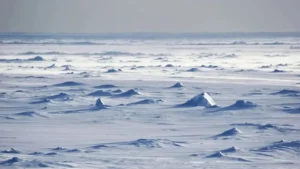Why in News?
In recent months (April 2025), tensions between India and Pakistan have resurfaced over the management of water resources, particularly connected to the Jhelum River.
Background:
- Jhelum is a major tributary that flows through sensitive areas like Pahalgam, Anantnag, and Srinagar.
- A controversial small hydroelectric project near Pahalgam triggered diplomatic protests from Pakistan.
- Pakistan claimed it could affect the Indus Waters Treaty (IWT) 1960 arrangements.
- India maintains that the project complies with the treaty, which allows run-of-the-river (non-storage) projects.
Recent Developments:
- Cross-border tensions escalated after minor skirmishes reported along the Line of Control (LoC) near Poonch and Uri sectors.
- Talks under the Permanent Indus Commission are being demanded by Pakistan but India insists on proceeding with projects crucial for local agriculture and power.
- Environmental groups in Kashmir also raised concerns over river health due to increasing hydropower constructions.
The main tributaries of the Indus River are Chenab, Sutlej, Beas, Ravi, and Jhelum. These rivers originate from different parts of India and flow through both India and Pakistan. They are vital sources for irrigation, farming, drinking water, and hydroelectric power. Historically and culturally, they have played a significant role in the region’s development.
Origin and Course of the Indus River
- Source: Glacier near Bokhar Chu in the Kailash Mountains, Tibetan Plateau (near Lake Mansarovar).
- Flow Path: From Tibet → India (Ladakh, Jammu & Kashmir) → Pakistan → ends in the Arabian Sea.
- Significance: Supports farming and daily life across three countries.
Total Length and Basin Area
- Length: Approximately 3,180 kilometers.
- Basin Area: Over 1,165,000 square kilometers.
- Importance: One of the longest rivers in Asia, crucial for agriculture and water supply.
Main Tributaries of the Indus River
1. Chenab River
- Origin: Tandi (confluence of Chandra and Bhaga rivers), Himachal Pradesh.
- Flow: Through Jammu & Kashmir, into Pakistan.
- Uses: Irrigation and hydroelectric power.
Major Hydropower Projects:
- Baglihar Dam (Jammu & Kashmir) – 450 MW (Stage I) + 450 MW (Stage II)
- Dul Hasti Hydroelectric Project (Kishtwar district) – 390 MW
- Ratle Hydroelectric Project (under construction) – 850 MW
2. Sutlej River
- Origin: Rakshastal Lake, Tibet.
- Entry Point in India: Shipki La Pass.
- Key Infrastructure: Bhakra Nangal Dam.
- Significance: Longest tributary, major irrigation and power generation source.
Major Hydropower Projects:
- Bhakra Nangal Dam (Himachal/Punjab border) – 1325 MW
- Nathpa Jhakri Hydropower Station – 1500 MW
- Karcham Wangtoo Hydroelectric Project – 1000 MW
3. Beas River
- Origin: Rohtang Pass, Himachal Pradesh.
- Confluence: Joins Sutlej at Harike.
- Importance: Agriculture, drinking water, and religious significance in Indian mythology.
Major Hydropower Projects:
- Pandoh Dam – Diverts Beas water into Sutlej for hydropower generation.
- Dehar Power House – 990 MW (benefits from Beas-Sutlej Link Project).
4. Ravi River
- Origin: Himachal Pradesh.
- Flow: Forms part of the India-Pakistan border.
- Significance: Historical cities like Lahore are located on its banks.
Major Hydropower Projects:
- In India: Ranjit Sagar Dam (Thein Dam) – 600 MW (Punjab/Jammu & Kashmir border).
5. Jhelum River
- Origin: Verinag Spring, Jammu & Kashmir.
- Flow: Through Srinagar and the Kashmir Valley into Pakistan, joins Chenab.
- Uses: Agriculture, drinking water, and hydroelectricity.
Major Hydropower Projects:
In India
- Uri Hydroelectric Project (Uri-I and Uri-II) – 480 MW total
- Lower Jhelum Hydroelectric Project – 105 MW
In Pakistan
- Mangla Dam – One of the largest dams in Pakistan – capacity of over 1000 MW.
- Neelum–Jhelum Hydropower Plant – 969 MW (recently inaugurated).





 Which Indian City is Known as the Footwe...
Which Indian City is Known as the Footwe...
 Which Desert is known as the Cold Desert...
Which Desert is known as the Cold Desert...
 Top-10 News Media Companies in the World...
Top-10 News Media Companies in the World...







